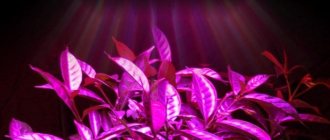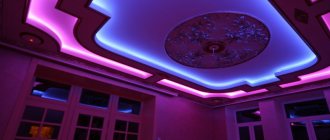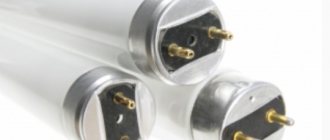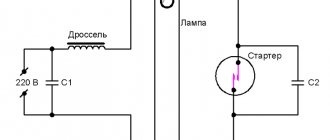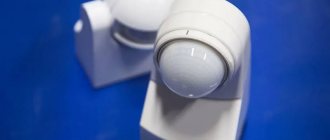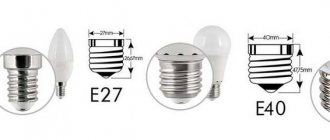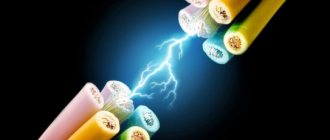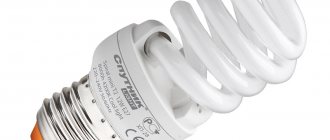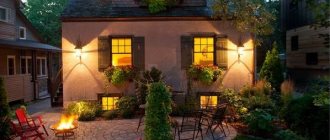Illumination is one of the most important criteria for choosing a location when placing a pot with an indoor flower or planting a seedling in open ground. Its intensity varies depending on the season of the year. For some plant species the need for it is higher, for others it is lower. Typically, the lack of natural sunlight is felt by plants in winter, as well as in December and March. If necessary, for light-loving species it can be compensated by turning on fluorescent or LED lamps.
Effect of light on plants
Light is the main source of energy necessary for the formation of hydrocarbons, fats and proteins that make up plant cells. It is absorbed by the green pigment of leaves, chlorophyll, and participates in the formation of organic substances along with water, carbon dioxide and trace elements. The combination of intensity and duration of solar insolation under natural conditions determines the change in phases of plant life - active growth, development of shoots and leaves, formation of buds, flowering, dormancy.
It is difficult for indoor plants to provide the required level of illumination for the following reasons:
- Light penetrates through a limited surface of window glass, so its intensity drops sharply at a distance from the windows.
- Window sills are often exposed to diffuse rather than direct sunlight.
- Windows on the lower floors of buildings are often obscured by nearby structures and trees.
- In rooms with dark wall surfaces and furniture colors, a significant amount of rays are absorbed by furnishings.
- When windows face north, northeast and northwest, less sunlight enters the rooms compared to south, east and west.
The upper floors of buildings and southern windows experience higher solar insolation, so flowers standing on window sills in the summer can get leaf burns and overheat.
To protect them from excess light, it is recommended to use shading of glass (sheets of paper, cloth) or place plants on shelves at some distance from the window.
It is better to place succulents on southern windows in summer. To protect the roots from overheating, you can place the pots in additional containers with sand or fine expanded clay.
How does changing the direction of light affect
Some flowers react to changes in the position of the bush in relation to the light source by dropping buds and flowers, for example, geranium, gardenia, fuchsia, and zygocactus. During the flowering period, it is not advisable to move them from place to place. In many species, shoots on the side of the light source grow denser and longer. For uniform development of decorative leafy plants, it is recommended to periodically rotate them along their axis by several degrees.
Effect of day length on flowering
The length of daylight hours has a significant impact on the flowering and fruiting of many crops. In a temperate climate zone, its shortest duration is 8 hours, maximum – 16 hours.
Based on the ratio of daylight hours and the onset of flowering, they are divided into:
- Species that require lighting for significant periods of time during the day. These include Saintpaulia, hydrangea, cineraria, gloxinia, calceolaria and some other flowers. Given sufficient daylight and good conditions, they grow and develop throughout the year. If these plants receive only natural light, they form and open buds from early spring to late summer.
- Species that bloom during short daylight hours (8 to 10 hours). These are plants such as zygocactus, poinsettia, chrysanthemum, azalea, and Kalanchoe Blossfeld.
- Indoor flowers that form buds at any length of daylight. These include evergreen begonia, rose, abutilon and some others.
- Plants that bloom when long daylight hours are replaced by short ones or vice versa. Thus, cyclamen and camellia bloom in winter, and grandiflora pelargonium blooms in spring.
What kind of lighting do plants need?
The quality of lighting for home flowers depends on:
- Light spectrum;
- illumination intensity;
- duration of illumination during the day.
The temperature in the room and the concentration of carbon dioxide also influence, but it is difficult to influence these parameters within the apartment, so we will omit them.
Requirements for illumination of flowers and plants:
- No strong heat generation, plants should not overheat;
- the presence in the emission spectrum of red and blue light, necessary for the normal process of photosynthesis.
Lamp heating
Due to the high heating of the bulb, incandescent lamps are unsuitable for use.
High pressure sodium lamps (HPS) are better suited for illuminating plants and are widely used in greenhouses. But they are of little use for home use due to their high power and correspondingly significant heat generation (the bulb can heat up to 600 degrees). They are also expensive to operate (high cost of ignition transformers).
LEDs practically do not heat up (read more about heating LEDs), therefore they are suitable for apartment use.
Spectrum of emitted light
Chlorophyll, found in green leaves, is capable of actively absorbing light with a wavelength of 380-710 nanometers; the rest of the spectrum does not activate the processes of photosynthesis.
Effective wavelength graph for a plant
Shorter waves in the spectrum of 380-500 nanometers stimulate the processes of cell division and an increase in green mass, and radiation with a long wavelength of 500-700 nanometers is necessary for intensive flowering and fruiting.
The graph clearly shows which color range is more effective for plant growth. Now let’s compare it with the spectrum emitted by different types of lamps.
Comparison of spectra of different light sources
Ordinary incandescent lamps are not suitable for illuminating indoor plants, since they have a predominant warm spectrum (700+ nanometers). Fluorescent lamps, which are preferred due to their cost, are very poor in spectrum and are inferior even to incandescent lamps.
The emission spectrum of LEDs for plants will be ideal. Especially when combining cool white - 400-500nm and warm white 500-700nm colors.
Advantages of LED flower illumination
The minimum service life of LEDs is 50,000 hours with minimal loss in brightness.
LEDs are more economical and consume less electricity (compared to incandescent lamps several times). They have extremely high efficiency and produce about 100 Lm per 1 W of energy consumed.
LED strips emit light at an angle of 120 degrees, which allows you to concentrate the radiation on the plants rather than illuminating the room.
Compact dimensions allow you to create lighting for flowers of any shape.
| Comparative analysis of phytolamps for plants | |||||
| Luminescent | Mercury | Metal halide | Sodium | LED | |
| PAR efficiency | 20-22% | 10-12% | 16-28% | 26-30% | 99% |
| Service life | 10-15 thousand hours | 10-15 thousand hours | 6-10 thousand hours | 16-24 thousand hours | 50-100 thousand hours |
| Average luminous efficiency | 50-80 lm/W | 45-55 lm/W | 80-100 lm/W | up to 150 lm/W | up to 100 lm/W |
| Cons, limitations of use | Not suitable for large areas, not suitable spectrum for plants | Economically unprofitable | Low color rendering index | Low color rendering index | No |
| Average energy consumption | 15-65 W/hour | 50-400 W/hour | 70-400 W/hour | 70-600 W/hour | 1 W/hour per diode or 15 W per meter of tape |
| Ripple factor | 22-70% | 63-74% | 30% | 70% | Less than 1% |
| Efficiency | 50-70% | 50-70% | 50-70% | 50-70% | 90% |
Specialized LED phytolamps for plants
Phytolamps are red and blue LEDs with peak intensity in the range of 440 and 660 nanometers, i.e. all radiation power is in the effective range for plants.
This LED plant lamp is used if it is necessary to illuminate a small area of 30-50 cm2 (one plant or one pot), because The light-emitting module has a luminous flux angle of 120 degrees. To illuminate a large number of plants (seedlings), it is more cost-effective to use LED strips and modules.
A phytolamp is a good choice for growing one indoor flower, but their price is unreasonably higher than regular LED strips. By combining warm and cool LED strip light, you will get the same result, but for less money.
Important. If you decide to use phytolamps, do not buy a “corn” type form factor. Much of the radiation will be wasted, even with a reflector, reducing the overall lighting efficiency.
Choosing the shape of an LED phytolamp
Signs of too little or too much light
The ability of indoor flowers to adapt to light levels varies. There are light-loving, shade-tolerant and light-indifferent plants. Insufficient lighting has an adverse effect on plant development. Sensitivity to a decrease in its intensity is higher in light-loving species.
The lack of light is indicated by the following changes in the appearance and development of indoor flowers:
- Plants with light or variegated leaves change color due to an increase in the amount of chlorophyll to better absorb incoming light. They acquire a dark green color, sometimes become narrower and slightly elongated.
- The stems stretch in the direction of the light, but grow thin and weak. The length of the internodes increases, and at the same time their fragility increases.
- After some time, the growth of shoots and leaves stops due to deterioration of photosynthesis and lack of organic matter.
- Some plant species do not bud or bloom for a long time.
With excess light, the following changes are noticeable in the appearance of the bushes:
- The leaves turn yellow-green due to the partial destruction of chlorophyll. They can also lose turgor, drooping down, and in some cases dry out due to loss of moisture. When burned by the bright rays of the sun, the leaf plates acquire a bronze tint.
- The growth rate of stems decreases, the distance between nodes decreases, the width increases and the length of leaves decreases.
How much light do indoor plants need?
Recommended by topic
TOP 25 Most unpretentious indoor plants 23 Houseplants that purify indoor air How to revive a home flower: drying out, frozen, flooded at home
The need for light intensity differs between light-loving and shade-tolerant species. If the first grow better on eastern, western and southern window sills, the second group can also feel comfortable on a northern or partially obscured window by a tree or a neighboring house. In summer, it is advisable to shade windows facing south at midday, even for light-loving indoor flowers. Shade-tolerant plants are suitable for placement at a distance of up to 3 m from the window opening.
Light intensity is measured in lux. To determine it, a special device is used - a lux meter. On a summer day, the illumination of an east-facing window sill is approximately 2500 lux; a few meters away it drops to 500 lux. On normal winter days, the light intensity of the same window fluctuates between 500–1000 lux. If you move a little further from it, its performance decreases to values that are unable to provide even shade-loving species with sufficient light.
To compensate for the lack of natural solar radiation, artificial illumination with lamps is used.
When choosing the type of lamps, determining their optimal quantity and the distance at which it is best to place them from plants, their need for lighting depending on the time of year and day, the quality and spectral composition of the rays are taken into account.
It was experimentally discovered that at a light intensity of less than 300 and more than 3000 lux (for some of the most hardy species, above 10,000 lux), the development of flower bushes stops. Regarding the spectral component, observations have shown that the energy used in photosynthesis is absorbed from rays in the red range with a wavelength of 720 to 600 nm and orange in the range of 620–595 nm.
Also of great importance is the blue and violet spectrum of rays, necessary for the formation of protein molecules and the active growth of shoots and leaves. Their length is 490–380 nm.
Ultraviolet rays bring certain benefits. At wavelengths between 315 and 380 nm they prevent stem stretching and promote the production of a number of vitamins; at wavelengths between 280 and 315 nm they improve resistance to low temperatures.
Why do you need additional lighting?
Why plants need light, everyone knows from a school botany course. With the help of light, the process of photosynthesis occurs, as a result of which substances necessary for nutrition and growth are formed. Photosynthesis occurs under the influence of the sun, isn't it enough to just put a flower pot on the windowsill? Unfortunately, no, because plants are different and the climatic conditions in which they are kept may not be suitable for them. Therefore, artificial lighting for indoor plants is necessary.
Depending on the need for lighting, indoor plants are divided into:
- Shade-loving - 700-1000 lux. These are poinsettia, ivy, calathea, arrowroot.
- Shade-tolerant - 1000-2500 lux. These include anthurium, monstera, ficus, spathiphyllum, phalaenopsis, dieffenbachia, dracaena, fuchsia.
- Photophilous - from 2500 lux. These are pelargonium, different types of roses, hibiscus, cacti.
Despite the fact that the lower limit for shade-loving plants is 700 lux, this does not mean that they will feel good and bloom at this level of illumination. This level is only enough to maintain life. The same goes for cacti and citrus fruits. Although for light-loving plants the bar is set at 2500 lux, they need at least 8000 to set fruit during flowering.
Seedlings need 24/7 lighting for rapid growth. The amount of light is systematically reduced to 15 hours a day. On average, an adult flower needs 12-13 hours of daylight. 24-hour illumination is harmful to adult plants.
If you compare specimens, for example, two dandelions grown in different conditions - in the shade and in the sun, then the first one will have long leaves stretching upward. The second one, grown in the sun, will be more squat, with wide, dense leaves. This suggests that the light level even affects the appearance of the flower.
How to choose a lamp
When choosing a lamp for supplementary illumination of plants, the preferences of individual species and varieties and the stage of development are taken into account. For example, for growing seedlings it is better to use LED lamps with a red and blue spectrum of rays. This will ensure uniform seed germination, proper development of seedlings, and the formation of healthy shoots and leaves. In principle, the versatility of LED lamps allows them to be used for any type of indoor and greenhouse plants. You just need to adjust the color and intensity of the lighting in each specific case.
For a free-standing bush or a small container with seedlings, it is enough to use a lamp with an E27 base, which is designed to be screwed into regular sockets.
A linear lamp will provide light to the entire surface of a window sill or flower stand. Large light panels are suitable for installation in a greenhouse or winter garden, covering a significant part of the space.
Fluorescent fluorescent lamps are suitable for additional illumination of plants in winter and during the dormant period. Sodium lamps with red radiation ensure abundant flowering and fruiting of greenhouse crops. For example, they will allow tulips to bloom almost simultaneously by March 8th. The absence of the blue spectrum in the glow of sodium lamps stimulates the high growth of stems of roses grown for cutting.
Guseva Ulyana
Ask a Question
Question to the expert
How to calculate the required power of a phytolamp to illuminate 1 m2 of area?
For plants located on or near a windowsill, 40 W per 1 m2 is sufficient. For the most light-loving species and when grown at a considerable distance from the window, a lamp with a power of 60 W is required to illuminate the same amount of area.
Types of phytolamps
Grow lights vary in the type of bulbs used.
Sodium lamps (HPS and HPS). Not suitable for residential areas: too bright. To illuminate 1 m2, 100 W of power is used.
pros
- high light output;
- long service life;
- wide range of operating temperatures (from -60 ºС to +40 ºС);
- effectiveness for flowering and fruit ripening, since the spectrum of arc lamps is in the red zone.
Minuses
- strong heating of the flask - there is a danger of explosion when water drops enter and there is a long distance in order to prevent burns to plants;
- non-immediate access to operating mode – it takes 5-10 minutes;
- special disposal due to mercury vapor content;
- the need for ballasts;
- inability to focus the light flux.
Sodium phytolamps
Fluorescent lamps (FL). Since the spectrum is shifted towards ultraviolet, which has a good effect on the root system, LLs are more suitable for growing seedlings. Fluorescent phytolamps are distinguished separately. Due to the light they emit, they can be called pink lamps. The pink tint of light (a mixture of blue and red spectrum) is obtained by applying a special phosphor.
pros
- profitability: relatively low price and energy efficiency;
- lack of heating does not require a high altitude;
- selection of lamps according to the light spectrum: warm light (3000-5000 K) for the flowering period, cold light (above 6000 K) for the growth of the root system and universal daylight for the entire period of plant growth.
Minuses
- low power: two lamps are needed for sufficient illumination;
- difficult to use in permanently inhabited residential areas: the blue spectrum will irritate human vision;
- difficulties with disposal due to the content of mercury vapor;
- difficult to use in greenhouses for growing cold-resistant plants: LLs are difficult to light and work poorly at low temperatures (flicker).
Pink light from LL
Energy-saving phytolamps (housekeepers). Variety of LL. The ballasts are built into the E27 base. The phytolamp is convenient for illuminating individual plants. Economies do not heat up and consume little electricity.
CFL
Induction lamps. The principle of operation is the same as that of LL, but the design is slightly different: there are no electrodes inside the bulb. Because of this, the service life increases: up to 15-20 years with a 12-hour operating mode. In addition, the luminous flux does not decrease over time, since there is no burnout of the electrodes. Induction lamps are expensive. They heat up weakly. The spectrum is suitable for growing plants.
Induction light sources for plants
LED phytolamps. One of the best types of grow lights. It is convenient to illuminate seedlings with RGB lamps. These are LED lamps with three crystals (red, green and blue) in one housing. Such light sources are controlled using a controller: you can illuminate the plants in turn with red or blue light, and when there are people in the room, switch them to white light mode.
pros
- long service life: up to 50,000 hours;
- low power consumption;
- good emission spectrum;
- no problems with disposal;
- heat up a little.
Minuses
- There is only one drawback: the cost of LED phytolamps.
LED lights
Based on their emission spectrum, the following lamps are distinguished:
Bicolor with sharp peaks in the red and blue parts of the spectrum. Recommended for:
- illumination of plants in places with a minimum amount of solar spectrum, window sills and balconies;
- growing seedlings;
- backlighting in winter and on windows facing north or shaded.
Full spectrum. Lamps with broad peaks in the red and blue regions of the spectrum. Universal, suitable for almost any plant. They are inferior in efficiency to bicolor ones, but benefit from the supply of artificial light, similar to that of the sun.
Multispectral. The spectrum combines red, blue, warm white and far red light. This spectrum stimulates flowering and fruiting in many ornamental plants (orchids, adeniums, etc.). Suitable for growing plants in the absence of sunlight.
Correct lamp installation
When placing the lamp, it is necessary to take into account that the light intensity decreases in proportion to the distance from the plant: if the distance from the top point of the bush is increased by 2 times, its illumination will decrease by 4 times. To prevent the rays from scattering to the sides, the lamps are equipped with reflectors. It is advisable that the surface of the walls is also light or covered with foil (for example, in a greenhouse) to reduce light loss.
It is recommended to place the phytolamp as close as possible to the plant, but not less than 10–15 cm from it. These numbers are relevant when growing seedlings.
For bushes of medium height, the lamps are placed 20–30 cm above their surface. When the lamp is removed more than 50 cm, its effectiveness decreases significantly. As plant growth gradually increases, it becomes necessary to raise the lighting fixture higher from time to time. Also, the distance between the flower and the lamp is adjusted based on the power of the lamp and the needs of the species being grown.
How to tell if your plants are getting enough light
Recommended by topic
Camellia garden How to get rid of gray rot on Gardenia plants
The lack of lighting can be inferred from the appearance of the bushes. To better use all incoming rays, the surface of the leaves turns in the direction of the light source. Increased production of chlorophyll begins in the cells, due to which light-colored or variegated leaf blades acquire a rich dark green hue. New leaves at the top of the stem are pale and slightly colored.
The shoots lengthen, trying to be closer to the light. At the same time, they become thin and brittle, with unnaturally elongated internodes. The lower leaves, which are most acutely experiencing a lack of light, begin to turn yellow and gradually fall off, because of this the base of the stem is exposed. The plant stops forming buds, flowers appear less frequently, are small and faded, or flowering is completely absent.
Signs of insufficient artificial lighting for indoor plants
Since the effect of artificial lighting on plants is in general the same as that of natural light, it is highly likely that external signs can determine that green organisms do not have enough light (excess, as a rule, is much less common):
- Weak growth and developmental delay - thin and smaller foliage, thin stem extended towards the light source.
- Unsaturated, pale color of foliage and stems.
- An increase in internodes due to stretching and deformation of the stem.
- Yellowing of the lower layers of foliage.
To check and get a more detailed picture of lighting efficiency, gardeners usually take measurements using devices such as photometers or lux meters, such as Radex Lupin. According to the indications, the light is adjusted - replacing the lamps with more powerful ones or adjusting the distance from the plants to the light source. You can also improve the lighting efficiency by redirecting it using a reflector.
If you don’t have a lux meter at hand, you can also use your smartphone - an application has already been developed and is available in the Playmarket that takes approximate but fairly accurate measurements through the smartphone’s camera.
What light is best for growth?
The growth of shoots and the appearance of new leaves occurs normally in the red and blue spectrum of radiation. Active photosynthesis requires light wavelengths from 300 to 720 nm. The blue spectrum promotes the formation of proteins and carbons. Ultraviolet rays prevent the elongation of stems and increase the synthesis of vitamins. The red and orange spectrum improves flowering and fruiting, and seed germination.
Lighting in winter
In the winter months, flowers should be moved to the brightest window sills, moved from the north side of the house to the southern and eastern windows.
For the most light-loving species, it is advisable to provide additional lighting.
For these purposes, LED lamps are used. They are economical and provide the entire required radiation spectrum. Minimal heat generation allows these lamps to be placed at a short distance from the plant.
Also, for illuminating seedlings and light-loving species of compact size, energy-saving lamps Foton, Elektrox, TNeon fluorescent lamps are suitable, for bushes in the flowering and fruiting stages - sodium HPS Grolux, Green Power, Prima Klima, etc. For effective operation of these devices, reflectors and ballasts should be used devices.
Question to the expert
Please tell me how many hours a day should indoor plants be illuminated?
It is desirable that the total duration of illumination be 12–14 hours. For example, with an 8-hour daylight hours, the flowers are illuminated for 4–5 hours. If the intensity of solar radiation is insufficient in cloudy weather, in a north-facing or shaded window you can turn on the lamp during the day. When germinating seeds, when the entrances appear, the light can not be turned off for the first 3 days, then gradually over several days the duration of additional lighting is increased to 14 hours.
Lighting time
The main task of supplementary lighting is to extend daylight hours in the morning and evening (additional lighting is provided for 3-4 hours, which in total gives 6-8 hours of additional illumination). In cloudy weather, the duration can be 10-12 hours.
Plants of different groups have their own needs for the duration of the light regime. By changing the illumination time, we achieve a change in stages, stimulation of vegetation and flowering. A deficiency of light, as well as an excess of it, can lead to disturbances. Before purchasing lamps, bushes are sorted according to the need for light and the characteristics of the growing season.
There are several groups of plants:
- Long days (requires more than 14 hours of wakefulness and bright light). These include allamands, saintpaulias, pelargoniums, bougainvilleas, and gloxinias.
- Short day (cannot exceed more than 10-12 hours). These are Kalanchoe, azaleas, begonias, poinsettias, and zygocacti. For flowering, the day should last 8-10 hours. Excess light activates photosynthesis and vegetation.
- Not demanding regarding photoperiods (they develop and bloom in any light conditions). Among them are roses and indoor maple.
Reference! Sensopolias require 12-14 hours of daily additional lighting for quality development.
The stages of dormancy and rest are taken into account, since a number of crops need to winter in shaded conditions. An exception may be flowers that bloom in winter and greens for forcing.
Illumination is carried out in compliance with photoperiods, the schedule is not shifted, and the distance to the light source is not sharply changed.
Lamp selection
When determining a light source, the radiation spectrum and intensity are taken into account. The wavelength and energy released depend on the color. Also pay attention to the following factors:
- Radiation angle.
- Total area of plantings.
- Required backlight duration.
- Uniformity of lighting.
- Distance from greenery to lamp.
Plants sense all spectral components, but rays such as orange, greenish and yellow are of no value to them. Lamps with rays are best suited for indoor plants and seedlings:
- Ultraviolet;
- Visible;
- Infrared.
Popular: Timely pruning of a fuchsia flower at home
For the synthesis of chlorophyll, the leaves must be exposed to blue and red spectrum. The first stimulates the growth of green mass, the second activates the germination of seed material and shoot growth.
Professionals advise using lamps:
- luminescent;
- gas discharge;
- light-emitting diode (LED);
- energy saving.
Conventional incandescent (tungsten) lamps have low efficiency and are not suitable for lighting. They provide 95% heat and 4.7% light. Sometimes used for:
- long-stemmed vines;
- short-stemmed species with large foliage.
Among the disadvantages are overheating, high energy consumption, a lot of orange and reddish rays, due to which the shoots overgrow and stretch. Additional connection is possible in combination with fluorescent lamps (4000 K or 6400 K). They are also used in southern latitudes for additional lighting of home greenhouses in the evenings.
| Types of lamps | Advantages | Flaws |
| LED | Low heating Economical (consume 1 W/hour per 1 diode) Safety Ideal light output (up to 104 lm/W) | Significant prices |
| Luminescent | Slight heating Excellent light output (50-80 lm/W) Affordable price Low energy consumption (15-60 W/hour) | Negatively affects the eyes May provoke cephalalgia and allergic reactions |
| Gas discharge | Excellent light output (from 40 to 150 lm/W) Spectrum close to solar | Explosion hazard Risk of overheating Low color rendering index Electricity consumption (70-600 W/hour) |
LED lamps for plants
Phytolights are artificial sun that triggers photosynthetic processes. Promote the production of carbohydrates, energy accumulation and active oxygen supply. Such sources are recognized as the most economical in terms of electricity consumption. They prevent overheating and form a special layer.
When choosing a lamp, pay attention to the wavelength, dimensions, radiation angle, power (from 1 to 25 W).
Lamps with the following spectrum are optimal for illumination:
- Blue (430-455 Nm). Optimizes growth, strength, shoot density;
- Red (660 Nm). Effective during budding and flowering. Promotes fruit set, growth of the root system, and has a beneficial effect on branches and tops.
The advantage of LEDs is that thanks to the lenses, phytolamps concentrate the flow of light and create directed radiation. Their intensity can be adjusted independently.
The service life is long, can reach 50 thousand hours. If the lamp works 15-16 hours a day, the lamp will last for 10-12 years.
LED phytolights are easy to install, absolutely environmentally friendly (used without protective glass), and do not change the temperature regime.
Location rules
How to install phytolights correctly:
- They are installed closely, since the light rays are not scattered.
- The distance from the lamp to the foliage is 15-30 cm.
- Trees and bushes are illuminated from below.
- Cable structures are used in shelving and large areas.
To make the lighting closer to natural, the devices are installed from above. To highlight the beautiful outlines of bushy forms, light is directed from the sides. To create a shadowy silhouette and highlight the structure, front lighting is preferred. When placed on the back side, the foreground is shaded, and original shadows decorate the center of the room. To illuminate 1 m2, you need a phytolight with a power of about 70 W.
Gas discharge lamps
Intense artificial light emitters. They serve as a solution for supplementary lighting of large plantings with minimal energy expenditure.
There are several types of such lamps:
- Mercury. They help to effectively grow green mass, but are not suitable for flowering. Light output reaches 60-80 lm/W. Operation is 10 thousand hours. During operation, monitor the integrity of the flask.
- Sodium. They create an orange-yellow spectrum and are used for large plantings. Operation 20 thousand hours. Due to the risk of explosion, not recommended for home installation. The spectrum is most similar to the sun.
- Metal halide. The most suitable choice for greenery. Convenient and reliable. The downside is that they can explode when exposed to drops of water.
Installation of gas-discharge lamps is carried out at a distance of 60 cm.
Fluorescent lamps
Effectively used for uniform illumination of seedlings and massive plantings. To illuminate large areas, two lamps are enough. Among the advantages:
- Excellent light output.
- Economical electricity consumption.
- Do not overheat when turned on for a long time (maximum heating up to 45 degrees).
Fluorescent lamps are installed in this order:
- 30-60 cm from deciduous species;
- 20-30 cm from flowers at the flowering stage;
- 30-35 cm from ornamental crops.
Experienced gardeners use osram fluora (special lamps with a multi-spectrum). They have a perfectly balanced red and blue color, which is important for young bushes and seedlings. Due to the spectrum mismatch, ordinary fluorescent lamps are absolutely unsuitable.
Energy-saving lamps
The most economical and profitable sources (minimal energy consumption, long-term operation). At different stages, plants require lamps with different characteristics:
- Blue 6400-4200 at the stage of vegetation and green growth;
- Red 2700-2500 during flowering, fruiting, and ripening.
Varieties of phytolamps
For effective illumination of seedlings and indoor plants, a large selection of phytolights are offered on the market.
The following models are popular among farmers and flower growers:
- Phytolight D. The power is affected by the length of the device, ranging from 24-96 W. The devices allow you to grow strong, not overgrown seedlings.
- Fluora. Products with a power of 18 W, 1-2 lamps are used to illuminate a window sill of 1-1.5 meters (taking into account the south or north).
- Enrich. Line of mirror phytolights. Power 60 W. Among the disadvantages is possible overheating of the green mass.
- Paulmann. The range includes different power - 40,60, 100 W. Among the bonuses is that they do not overheat.
- LFU-30. Used for mini-gardens, niches, greenhouses with lighting areas of 0.4-0.7 m. Has a power of 30 W.
Indoor plants: subtleties of additional lighting
In winter, home flowers (fuchsia, gardenia, orchids, dracaenas) receive additional illumination for 4-5 hours. Even when placing pots on south-facing windows, there is not enough natural light. They need lighting of about 10 thousand lux.
Three decorative lighting methods are used:
- Directed. Allows you to emphasize silhouettes and contours. Used as an additional option.
- Lower. Light a composition or group of plants from below. Helps highlight details and transform space through the play of shadows.
- Control. The lamps are placed behind the flowers, so contrasting silhouettes stand out.
LED technologies are preferred in home greenhouses and gardens. The power is selected in the range of 10-50 W. They try to create soft lighting taking into account the overall color background.
Lamps with a dominant yellow spectrum are installed for:
- palm trees;
- ficus;
- dracaenas
Yellow rays slow down the development of shoots and are used for stem crops. Light-loving varieties (succulents) are combined with phytolamps and warm lamps.
Few plants cope with a lack of lighting:
- chrysanthemums;
- Kalanchoe;
- Saintpaulia;
- Erica;
- poinsettia.
Lamps with red rays are connected at night and placed in rooms where there are no people (to avoid retinal fatigue).
Houseplants that require a lot of light
The most light-loving species include myrtle, pineapple, roses, Kalanchoe, spurge, citrus fruits, bocarneya, bougainvillea, southern cordyline, hibiscus, pittosporum, succulents, yucca, acacia, oleander. They require high lighting intensity - from 4000 lux.
At a short distance (up to 2 m) from a sunny window, avocado, banana, gardenia, hibiscus, lily, ficus, coconut, coffee tree, begonia, zamioculcas, dracaena, passionflower, cyclamen, primrose, caladium, gloxinia, sundew, zantedeschia feel comfortable , saintpaulia, gardenia, araucaria, cyperus, abutilone.
Indoor plants that don't require a lot of light
From 1000 to 3000 lux of light is sufficient for ferns, gesneria, bromeliad, billbergia, fittonia, scindapsus, shieldweed, davallia, aspidistra, fatsia, ivy (without variegated leaf color), bellflower, Venus flytrap, dwarf ficus, pellea.
Diffused light with an intensity of 3000 to 4000 lux is needed for aglaonema, tillandsia, fuchsia, begonia, nepenthes, variegated ivy, streptocarpus, mimosa, clivia, cirpus, asparagus, tradescantia, balsam, philodendron, syngonium, tillandsia, clusia, rhododendron, antur iyumu.
The correct placement of plants on windows or at some distance from them contributes to a beautiful appearance and active development of bushes. During the dormant period, indoor flowers should be provided with sufficient lighting, slightly reducing the air temperature in the room. Various types of lamps with red and blue wavelengths are suitable for additional lighting. Additional lighting of seedlings will allow you to obtain strong and well-developed seedlings.
The best lamps for plants.
- “Health Treasure” for plants 16 W, 56 cm. Full spectrum LED lamp. Combines blue, red and white colors. Height adjustment from 10 to 500 mm. Power 16 W. Simple design and installation. The price is about 2000 rubles.
Pros. Reliable fastenings, light does not irritate the eyes, economical.
Minuses. Short cord: 1.5 m.
Health treasure
- Jazzway PPG T8i- 900 Agro 12w IP20. Suitable for fruit-bearing plants. Red to blue ratio: 5 to 1. Suitable for home use. Suspension. T8 lamp. Power 12 V. Service life 25,000 hours. Length 880 mm. The price is about 1000 rubles.
Pros. Availability. Fastenings included. Easy. Possibility of adjusting the height of the suspension.
Minuses. Light flux angle 120⁰. Pink light irritates the eyes.
Jazzway PPG T8i- 900 Agro 12w IP20
- SPB-T8-Phyto. The lamp is suitable for the most capricious seedlings: emphasis on the development of roots and stems. The kit includes two lamps, mounts and wires. Base G13, T Price about 1000 rubles.
Pros. Reducing the intervals between waterings. Does not heat up - minimum distance from plants.
Minuses. The cord is short, the light strains the eyes.
SPB-T8-Fito
- Ladder-60. Pendant lamp 60 cm long. Suitable for greenhouses and home use. LED. Red to blue ratio: 4 to 1.
Pros. Waterproof, high luminous flux, does not heat up.
Minuses. High price (about 9,000 rubles), unpleasant light.
Leader-60
- Related Posts
- Track lighting system: device, types and ideas
- LED lamps g9: device, principle of operation, scope of application, popular models
- Types of lamps with gu10 base, popular models, technical characteristics

